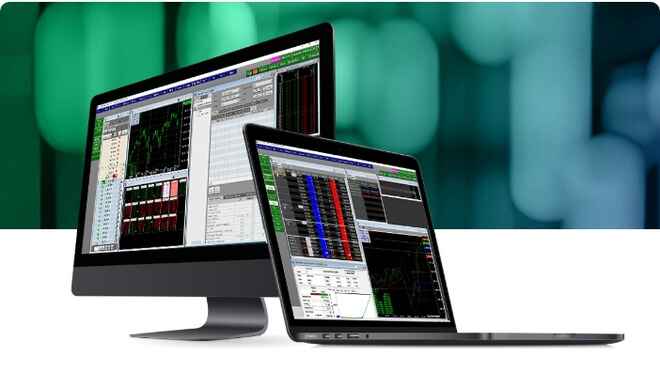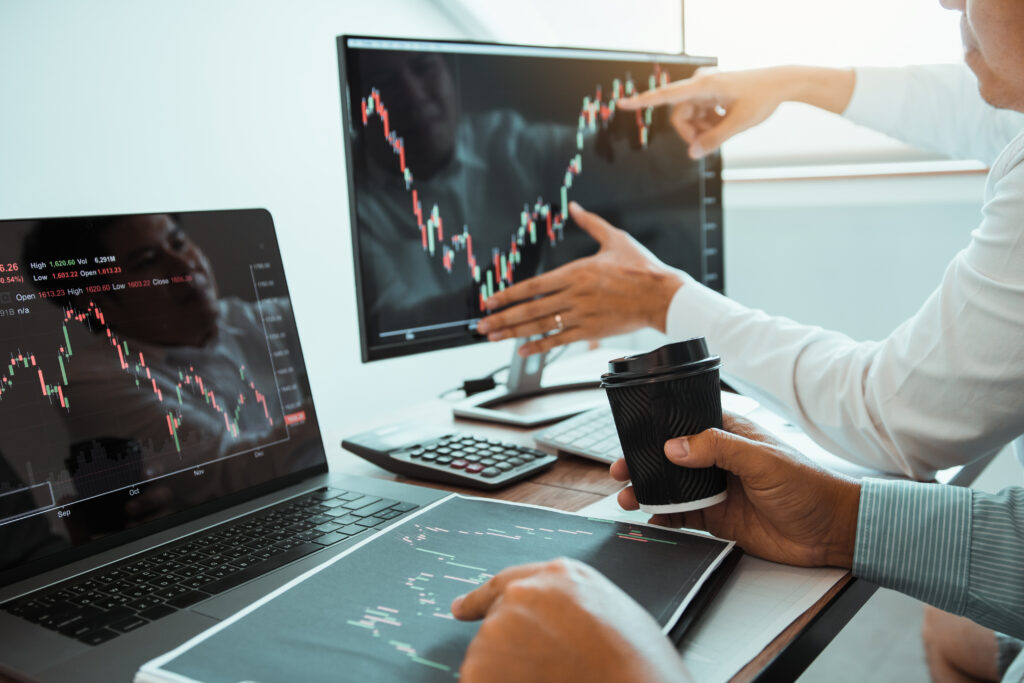Critical Trading Mistakes
Skipping the Basics
Many new traders think the basics are easy and irrelevant and try and leap straight to the “advanced” material. This can be a critical mistake. Just as you can’t jump into a Formula One car as soon as you get your learner license, or grapple with trigonometry without mastering basic arithmetic, you couldn’t become a successful trader until you understand the nuts and bolts of the business. The basics are crucial and you would need to really understand them before attempting more complex trades. A good example of this would be the core concept of support / resistance, how it relates to price action, and the ramifications on a trading position.
Lack of Strategy
Another serious mistake is having a lack of a proven trading strategy with exact entry, stop loss and profit targets. Nothing in the markets are 100 percent certain, but traders need to look for strategies that are consistent over a large sample set of trades. You need to know under what trading circumstances it is worth entering a market, and when you are going to say it is time to get out. Most successful traders who have found consistent success over the long term have often chosen to establish a framework within which to trade. This framework is a structured trading plan that has boxes that NEED to be checked before a trade signal is worth executing. Some of these boxes could be:
- Price trending on multiple time frames
- Trading when price breaks through well-defined flat levels
- Using candlestick patterns to define trade entry
Ultimately, the solution to this mistake is to have a trading strategy and give yourself a chance to get competent at executing it. This only comes via lots of practice!
Focus on One Market
Focusing on one market isn’t a bad thing per se. The downside is that if you only ever look at that one market, then you can sometimes create trades that aren’t really there and that don’t fit your trading strategy. This occurs due to our natural instinct of wanting to add value by being ‘busy’. The problem is that you can get into trouble by giving in to this instinct because you’re not following your own trading rules. What you should be looking for are ways to apply your established strategy across the best markets with the right opportunities. The solution would be to have a dynamic, simple-to- use strategy for any market and any timeframe. This means you can easily apply your strategy to a second choice market when your first choice is not providing opportunity.
Chasing Market Moves
Look before you leap. It is very tempting to want to jump in when the market has already started a significant move. But you have to be confident that you are not getting in on the action as the market is peaking. We recommend keeping your emotions under control and making sure you stick to your proven trading strategy and analysis. You may feel you are missing out on a big gain, but the reality is you first need to take a deep breath and look at what the charts are trying to tell you. The professionals have the proper experience to ride the move in the
right direction, they don’t get pulled along by market excitement.
Using Wide Stops
Some traders use wide stops, thinking that if they stay in the trade longer, the market has more room to swing and their stop loss is less likely to be hit. The problem with this approach is that while it sounds good from a risk management point of view, it makes it tougher to reach your profit target as the market would have to move further to reach your limit order.
So, if the problem is that using wide stops means that you would have wide targets that are less likely to be hit, then it would make sense to base orders on what price is doing. In other words, base stops on logical levels defined by price as this would take into account the current market volatility and key technical price data such as current trend and key levels. Develop a dynamic flexible, simple-to-use strategy for any market, any time frame.

Failure to Keep Records
This is an easy fix, but frequently overlooked error. You can learn from your successes and your mistakes. We recommend keeping screen shots of trades with notes on reasons for entry, how each trade worked out, and reviewing them later to guide future decisions. This can improve your trading skills and help you avoid repeating mistakes. As the Spanish philosopher George Santayana wrote, “Those who cannot remember the past are condemned to repeat it.” Keep screen shots and records of past trades allow for a review process. The review process is essential to improve your trading. By studying past performance, we aim to learn from mistakes and improve on future performances.
Expectations
Unrealistic Expectations
Unrealistic expectations can cost you profit in the longer term. This includes those get rich quick trading schemes that promise a 90 per17cent success rate, or that you can turn $6,000 into $6 million with minimal knowledge, experience or effort. That’s not to say this never happens, but they are by no means typical trading results. Becoming a successful trader is usually a slow process and, while everyone has a different timetable, it rarely happens overnight. Traders need to develop the right mindset and become proficient at executing a proven strategy. Successful traders have realistic expectations focused around minimizing their losses, and maximizing their gains. And they have learned the wisdom of taking their time in evaluating opportunities. Focus on becoming a good trader first – competence is essential to profit. Focus on what you can lose from a trade, not what you can make. Study the world’s best traders and have realistic expectations – you will not be the best trader on earth in month one.
“Don’t let the fear of the time it will take to accomplish something stand in the way of you doing it. The time will pass anyway; we might just as well put that passing time to the best possible use.”- Earl Nightingale
Getting the Wrong Idea
We all want to be winners and it definitely hurts to lose. But trading isn’t just about picking consistently winning trades. We have to be aware that not every trade is going to be a home run. There are going to be trades that go against us, so managing risk is key. You need to keep a balance in your activity. You may find yourself locked into a strategy where your trades – while winning – are so small that a single loser may blow your profit out of the water. Losing trades are inevitable, but you want to keep them small and maintain long term profitability. Learn to think in probabilities. Successful traders think differently, they understand that losing trades are inevitable. Profitability in trading occurs over large sample sets.
Looking for the Perfect Strategy
We don’t know whether the Holy Grail of medieval legend exists, but we do know that no-one has found it yet. Just as golfers are always looking for the new putter that will magically transform their handicap, so some traders are tempted to pursue the Holy Grail of market success. Be aware that there is no magic single trading technique. We are delighted that you are reading this guide, because it means you are committed to learning from past mistakes and identifying potential future pitfalls. In the end, you have to come back to the strategy that you have proven works for you over the long term. If you execute that strategy decisively, you should end up ahead of the game. This is the equivalent of a new golfer looking for the magic golf club to transform their swing. Please stop searching, it does not exist. Start focusing on learning to trade.
Expect to Win…..and Lose
It is of paramount importance to maintain a positive mindset in trading. Every strategy, no matter how successful, will go through drawdown periods – this is when the impact from the losses exceeds the gains from the successful trades. It is easy to slip into a state of negativity during these times and then to expect that the next trade will lose money. Remember, the market tends to give you what you want and if you expect to lose money then it is highly likely that you will subconsciously take steps to ensure this occurs. Find a great strategy and believe in it, believe that drawdown periods are bound to occur and that the next successful trade is just around the corner. Believe in and work on your ability to follow your strategy competently and flawlessly every time.
Treat Trading Like A Business
When you become a trader, you are in business and you need to treat your activities as a business and conduct yourself professionally. Some people don’t like keeping records and put it off, but they shouldn’t. Every serious business, be it large corporate, or one-or two person small enterprise, needs to have a business plan and keep records so it can measure progress towards achieving objectives. That helps us improve and evolve our trading skillset. Trading is your business, this is your money at risk and you want to grow it. Stay businesslike and focused in order to succeed. If you want a hobby, take up something less risky. If you want a career in trading then take it seriously. Trading is
your business.
The Right Attitude
Who’s at Fault?
Don’t play the blame game. The market isn’t against you and your loss wasn’t a problem created by your broker. Bad trades are nobody’s fault but your own. Successful traders accept full responsibility when trades go against them. The market is a great teacher. Sometimes you need to sit back, analyze your losses and learn from what happened when it didn’t go right. You might then realize that you misread the indicators and now see they were diverging, or that you failed to see that price was overbought on the higher time frames. In short, you should choose to own your mistakes. Winners accept responsibility. Admit it when you get things wrong, learn from it and move on.
Lack of Control and Discipline
You will have bad times trading, which means that it is paramount to have control over your emotions and a very disciplined approach. The important factor is not how your trades perform, but how you react to the outcomes. There is always the possibility that something will come up out of the blue – you may be trading crude oil on a bullish trend when news breaks of a new discovery and oil suddenly plunges. Don’t take market setbacks personally. You cannot predict completely unexpected events. But you can stick with your strategy, monitor what is going on, and work with the known factors to create positive outcomes.
Solution: Work on first recognizing and then managing the emotions from trading. Employ a trading plan. Don’t take trading outcomes personally, because every strategy has to have some losing trades.
Focusing on Money Over Risk
A classic error in trading is to be overly focused on making money and ignore the need to manage risk. Risk is the key element in trading. You can accept, understand and embrace risk, or ignore it. But if you opt for pretending risk doesn’t exist, you are unlikely to become a successful trader. It is essential to accept that every trade has the potential to lose money. We know that on any given chart after any candle, the price can go up, down or sideways. You need to accept this, take steps to reduce risk and manage it regardless of which direction it goes. Whatever risk management policy you adopt, make sure you have one that works for you. Accept that every trade could lose you money and take steps to reduce that risk. Create and employ a risk management plan.
The Fear Factor
It is understandable when you start off in trading to be hesitant and fearful. Some people can never quite take their first step in the markets because they’re afraid of being wrong. However, it’s important to understand that if you become a trader, inevitably there will be times when you get the market wrong. You have to accept and embrace that fact. But if you have a proven strategy and stick to executing professionally and consistently, then you have a high probability of success on your side. You need to take that leap of faith. Begin. Take the leap.
The Biggest Mistake of All
The most serious error, is giving up once you’ve made a start. Everyone has a different learning curve. If you take trading seriously and ensure that you study and educate yourself, you will start to see progress. That can be hard to measure sometimes, so you need to step back once in a while and reflect on what you have learned. By all means, start off by paper trading while you learn the ropes. But whatever you do, don’t give up. Those who have achieved greatness all have one thing in common – persistence.
“Success is stumbling from failure to failure with no loss of enthusiasm.” Winston Churchill



